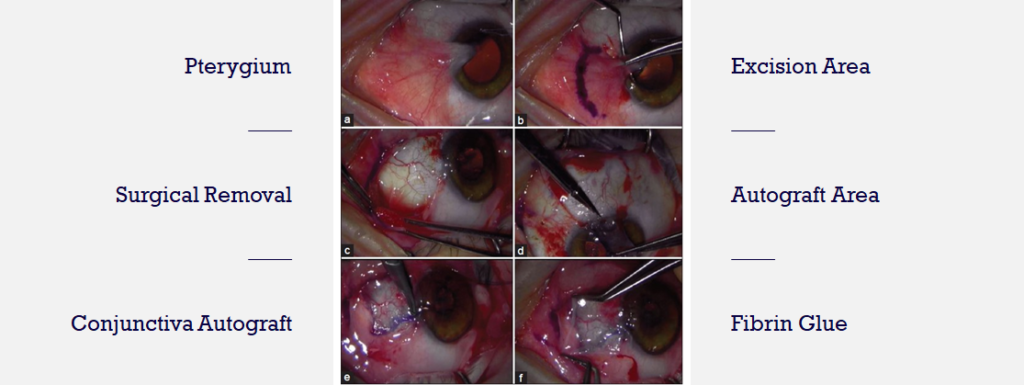Pterygium
What is Pterygium?
Pterygium is a commonly occurring ocular disease. Pterygium often occurs in regions with abundant sun exposure. The pterygium patient population is estimated to be approximately 10 million to 15 million patients in the United States and approximately 10 million in Europe.
A pterygium is a benign fibrovascular growth onto the cornea that can impair vision. It progressively grows and has cycles of irritation. It is associated with and thought to be caused by ultraviolet light exposure (e.g., sunlight).
Symptoms of pterygium includes hyperemia, irritation, foreign body sensation, and pain. It can cause visual impairment due to lesion obscuration on the visual axis.

Sources:
- https://emedicine.medscape.com/article/1192527-overview#a6
- https://www.nrel.gov/gis/solar.html, Accessed November, 2018
- Hovanesian, J. A. etc., J. Cataract Refract Surg., 2017, 43, 405-419
- Rezvan, F. etc., Surv Ophthalmol., 2018, 63, 719-735
Current Treatment

There are no FDA-approved drugs for pterygium. Physicians often prescribe off-label drugs including artificial tears, topical corticosteroids, NSAIDs with limited efficacy or safety concern. Surgical removal is dependent upon visual axis involvement, symptom severity and cosmetic concerns.
The images above show the current standard of care to treat late stage pterygium patients – surgical excision. Unfortunately, post-surgical recurrence rate is high.
Sources: 1. Medscape; 2. The National Renewable Energy Laboratory, Accessed November, 2018.; 3. Hovanesian, J.A.etc., J. Cataract Refract Surg., 2017, 43, 405-419; 4. Rezvan, F. etc., Surv Ophthalmol., 2018, 63, 719-735
Cloudbreak Solution
We formulated a potent multi-kinase inhibitor of VEGFRs, PDGFRs, FGFRs, which can inhibit angiogenesis and fibrosis. The angiogenic and fibrotic pathogenesis of pterygium is well established.
By targeting these pathways pharmacologically, the potent multi-kinase inhibitor will stop pterygium progression and eliminate the need for excision surgery. The image to the right shows the mechanism of action.

